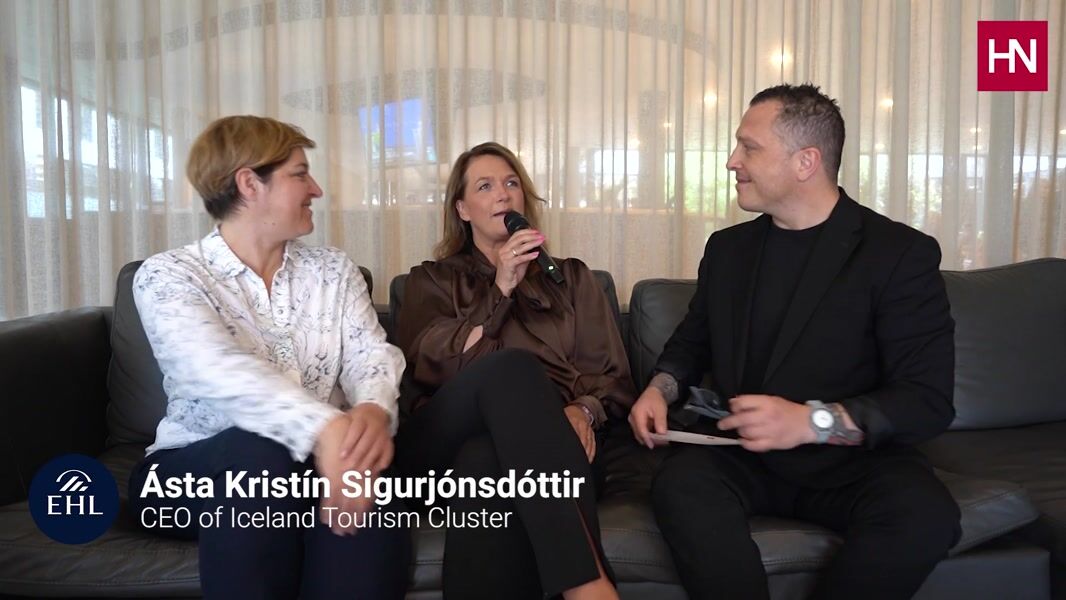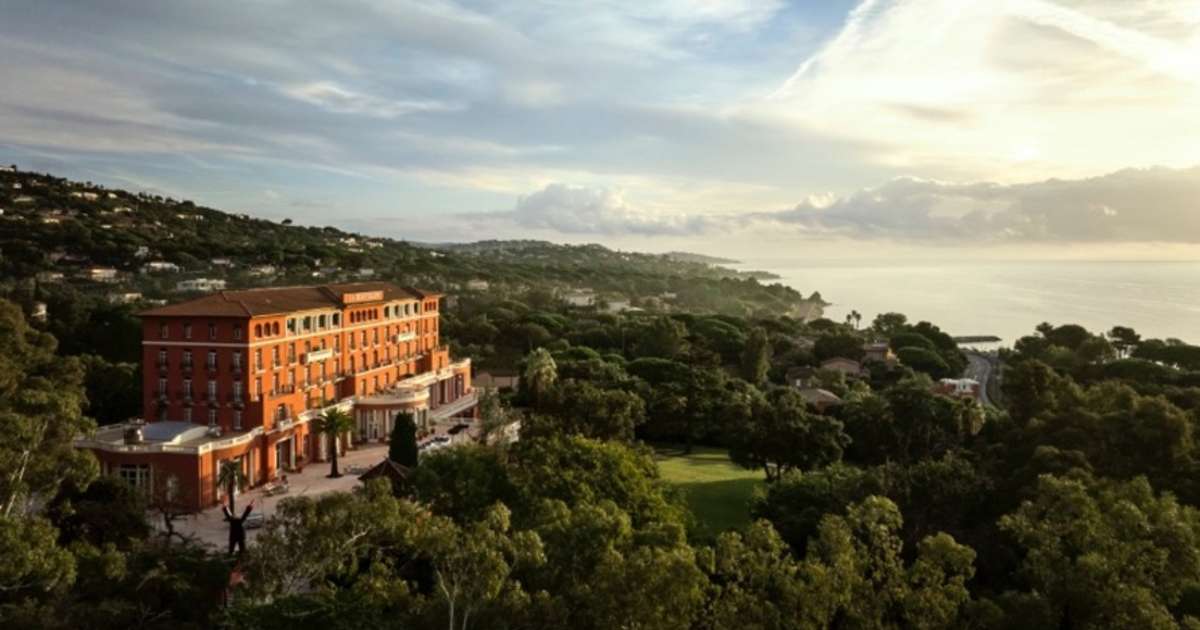
At the EHL Open Innovation Summit, we had the opportunity to speak with Ásta Kristín Sigurjónsdóttir, CEO of the Iceland Tourism Cluster, and Milena S. Nikolova, Ph.D., Chief Behavior Officer and Co-founder of BehaviorSMART. Our conversation explored how artificial intelligence might transform the way we plan and experience travel, how technology must be used with behavioral insight to enhance rather than diminish hospitality, and why the industry must rethink success in terms of community well-being—not just business outcomes.
What do you think is the technology that is going to reshape our industry the most over the next 5 to 10 years?
It was highlighted that “we have no idea today,” but if a prediction must be made, “I would say AI.” The technology is huge, and the important thing is “to not be afraid of tech” and to keep business owners close when discussing new developments. ChatGPT was mentioned as “really important,” with a need to “educate and learn how to use” it while remaining in control—not letting it take over. What will be interesting is how the “influx of AI solutions will actually change the behavior of travelers.” As AI agents increasingly mediate the interaction between travelers and technology, this may fundamentally shift “the way that we dream about, get excited about and plan our holidays.” The key challenge will be how AI can “still manage to keep the magic in” while removing human interaction, especially in an industry “based on human to human interaction.”
How do you think we can use some tech in personalization to make sure our stay is better without forcing the experience to the guest?
This is “one of the key questions that we all will be asking ourselves.” There is enough behavioral science knowledge to understand how service design and tech touch points influence behavior. “There’s no excuse” for placing tech-based touch points that “end up producing undesired impact,” because “we have the knowledge.” The real challenge is to “marry the two”—combining what we know about human behavior with the benefits of technology. Tech can handle the tedious and operational aspects, while still “supporting the enhancement of the magic, the emotions, the connection between people to people.” And it must also help with “managing the footprint of the industry,” one of its most pressing unsolved challenges.
Do you agree that we’ve got all the KPIs wrong in our industry when it comes to sustainability and regeneration?
Yes, and the answer builds on earlier points. For the last three years, the focus has been on helping companies “make up or find the default options.” That means shifting responsibility away from the traveler and “putting it in the forefront of the businesses.” Guests trust companies to do the right thing, so businesses must adapt and “make the default choice the best choice.” For example, restaurants can place “the most sustainable course” as the default on the menu. This nudges guests without “forcing or shaming” them. It’s a “behavioral change, but without it being a force or without it being a shameful thing.” As for KPIs, “it’s really, really hard to measure regenerative methods in tourism.” Some things, like electricity usage or visitor numbers, can be counted—but “value is more difficult to measure.” We need to “recalculate a lot of things” and ask local communities: “What do you see as a success?” Success might mean different things to businesses versus residents. It’s time to go back, ask those questions, and rethink what we’re doing.
What is success to this community or this place?
Success needs to be defined “not by the business alone, but also by the people living there.” A community may have “a completely different thought about what is success” compared to a business. To move forward, we must “rebuild and think about what we are doing” by asking communities directly: “What is it that you really need for this place to thrive?”
About the EHL Open Innovation Summit 2025
This interview was recorded during the EHL Open Innovation Summit in Lausanne, where Hospitality Net joined as official media partner.
The event brought together a global mix of thinkers and doers to explore the future of hospitality, food, and travel through open innovation. What made it special was the mix of ideas, formats, and people. It was not only about tech or talks. It was also about people showing up, working together, and sharing energy in real time.
Key Figures
- 385 participants
- 48 speakers and contributors from more than 20 countries
- 7 innovation challenges collectively addressed
- 45 sessions
- 25 student volunteers
- 15 F&B startups letting us taste the future
- 1.5 days of connection, learning, and co-creation
Key Insights from the Summit
- A new benchmark for hospitality innovation
The summit set a new standard by weaving together AI, sustainability, regeneration, and human connection – showing that innovation in hospitality, luxury and food must be holistic, human-centric, and purpose-driven. Participants repeatedly highlighted the need to go beyond efficiency and into meaningful transformation. - From knowledge exchange to real-time co-creation
More than just a series of talks, the summit was an activation space – a living lab where diverse minds worked together on pressing challenges, from regenerative tourism to circular luxury to AI in guest experience. It was a showcase of collective intelligence in motion. - Collaboration as the engine of systems change
Open Innovation came alive not as a buzzword, but as a relational practice. From panelists to students, from global explorers to startup founders, everyone was invited to co-create, connect dots, and contribute. Participants repeatedly said they experienced true collaboration across boundaries, industry, sector, age, and background. - The power of presence: hearts, minds, and hands
Whether walking in the forest, painting together, or debating future systems, attendees embraced the idea that innovation isn’t only about tech and metrics – it’s also about embodied experience, slowing down to speed up, and nurturing a regenerative mindset. - The future is “AND” – not “either/or”
A recurring takeaway: we must stop choosing between extremes. The future is tech AND human, healthy AND delicious, profitable AND impactful. This “integration mindset” is already informing how leaders, startups, and educators present are reshaping their strategies. - The beginning of a long-term movement
Attendees described the summit as the start of something much bigger – a platform for experimentation, learning, and alliance-building. The EHL Innovation Hub was recognized not only as an academic powerhouse, but as a true catalyst for regenerative innovation across hospitality, service, food, and travel.

